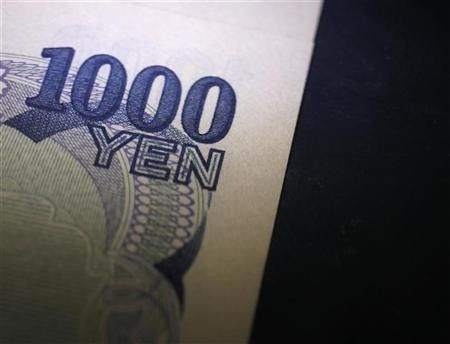Japan’s Monetary Base Rises 10.8% In October

Japan's monetary base rose in October compared to that in the previous month, indicating that the monetary easing policies are leading to an increase in the amount of currency in circulation, which in turn results in reviving economic growth.
According to the data released Friday by the Bank of Japan, the country’s monetary base, which measures the change in the total amount of domestic currency in circulation and current account deposits held at the central bank, advanced to 10.8 percent in October, up from 9 percent rise in September. An increase in supply of money is expected to lead to additional spending, which in turn results in inflation.
Last month, it was reported that Japan's core consumer prices continue to fall in September, indicating that deflation persists to impair the economic growth prospects. The data released by Japan’s Statistics Bureau show that consumer prices declined to 0.1 percent in September from the earlier year down from 0.3 percent fall in August.
A main reason for the existence of deflation in Japan is due to the shortage of demand relative to the supply capacity of the economy. How the government addresses this will, in effect, indicate whether it can achieve the target of 3 percent nominal GDP growth per annum through 2020, with inflation of 1 percent, meaning that the economy should achieve a 2 percent annual real growth.
Policymakers feel that deregulation can help along with the BoJ continuing with its monetary easing measures. Earlier this week, the BoJ announced more monetary easing policies with the asset purchase program (APP) by about 11 trillion yen ($138-billion). This brings the total size of the APP to about 91 trillion yen, of which 25 trillion yen is in loans, and the remaining 66 trillion yen is for asset purchases. Also the policy board agreed a further 5 trillion yen each of Japanese government bonds and treasury bill purchases and announced 0.91 trillion yen of purchases of risk assets.
Meanwhile, market participants feel that Japan’s economy will need further support especially with the country’s industrial output dropping in September compared to the previous month in an indication of the faltering economic condition and soft global demand. According to the data released earlier this week by the Ministry of Economy, Trade and Industry industrial production, which measures the change in the total inflation-adjusted value of output produced by manufacturers, mines and utilities, fell 4.1 percent in September down from a 1.6 percent decrease in August.
Also it was reported last month that Japan’s core machinery orders fell in August compared to that in the previous month, showing that there is an urgent need to take additional measures for enhancing the growth potential of the economy. According to the data released by the Cabinet Office, Japan’s core machinery orders declined 3.3 percent in August, down from 4.6 percent increase in July.
© Copyright IBTimes 2024. All rights reserved.




















